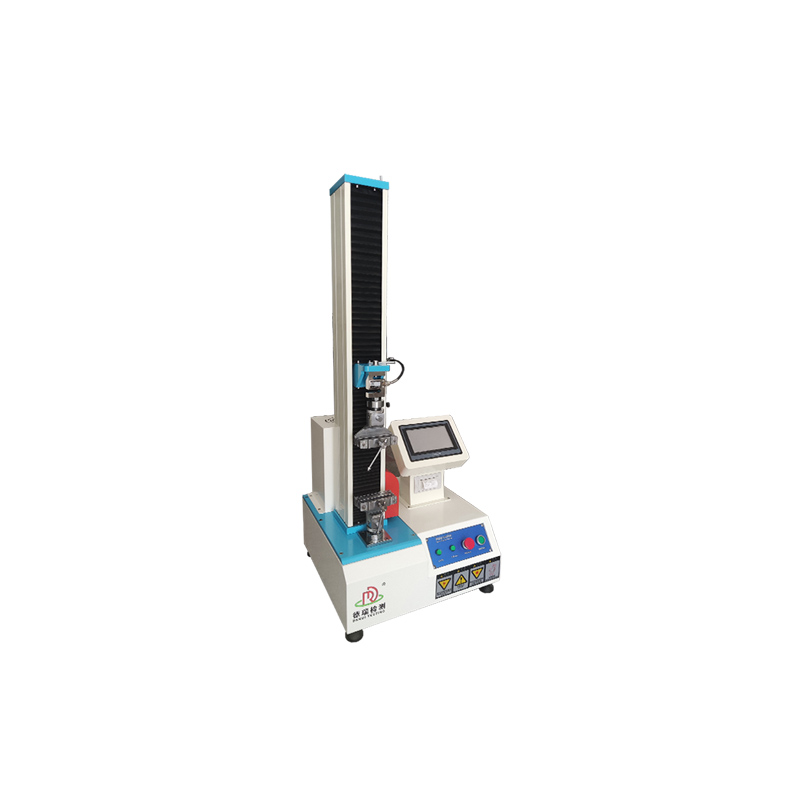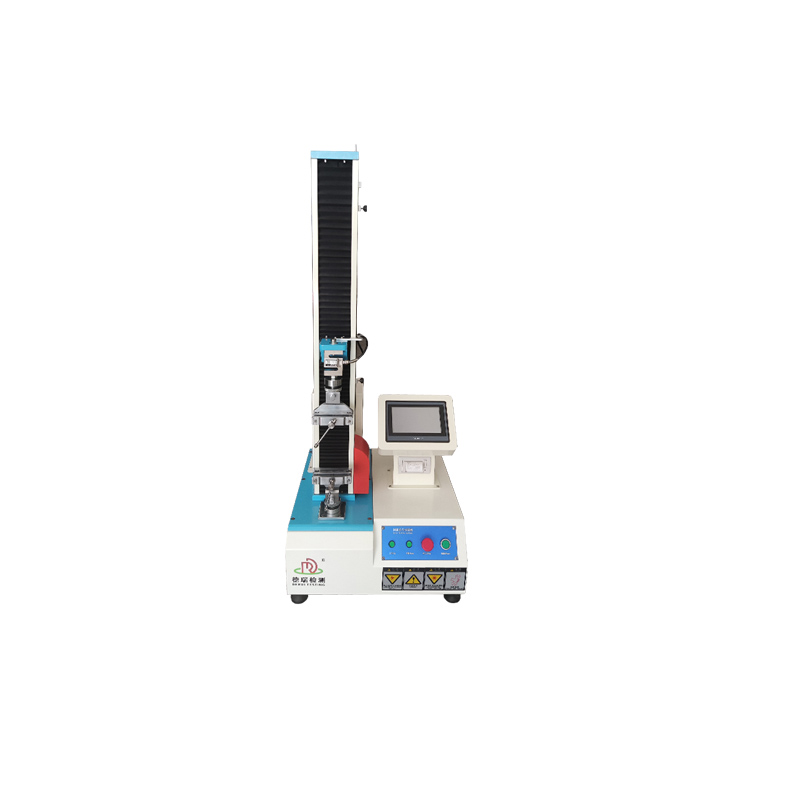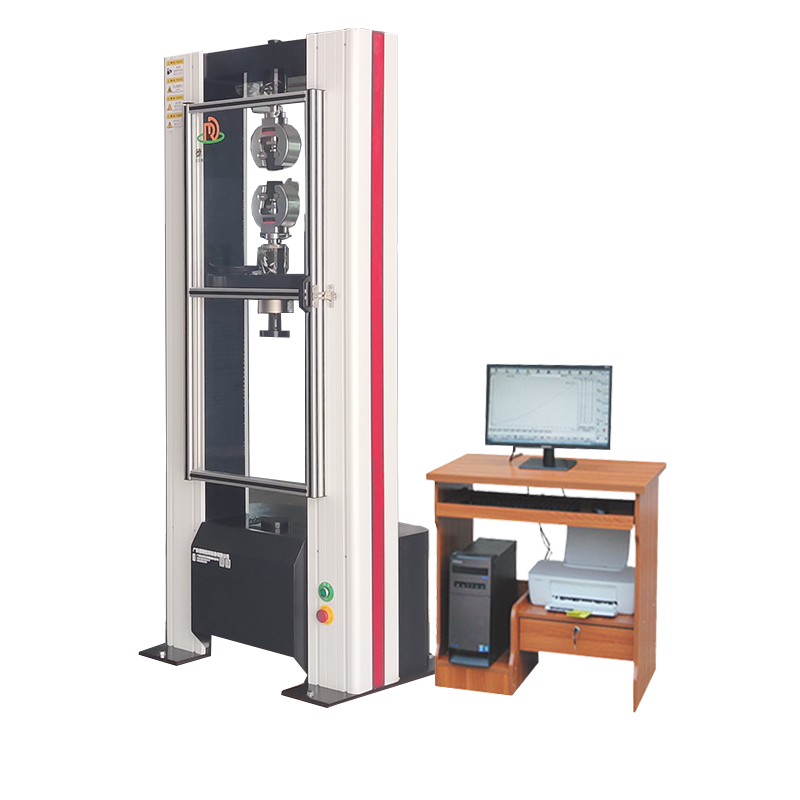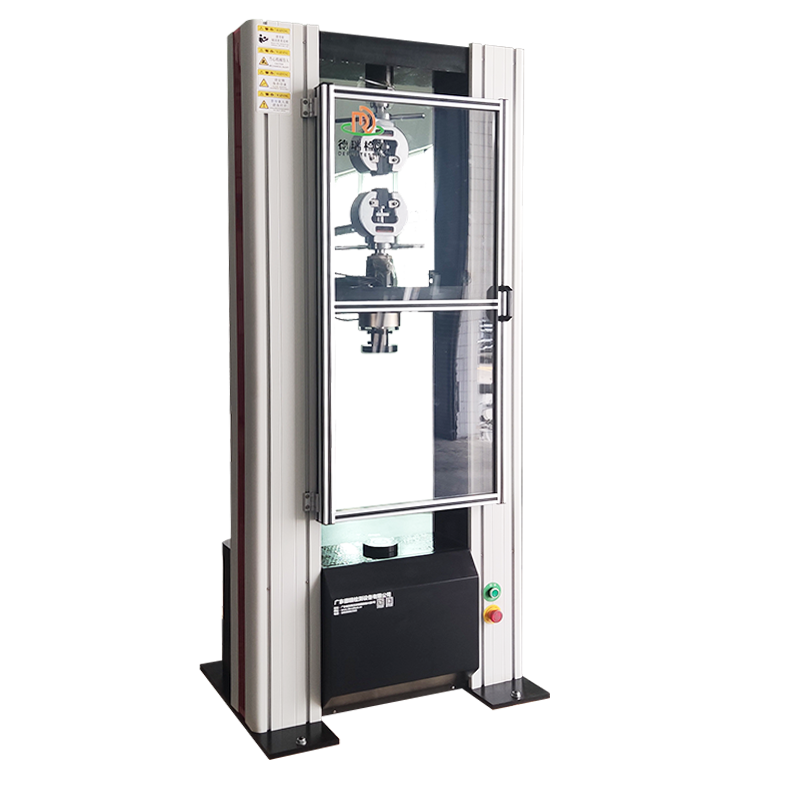
Textile Tensile Testing Machine
2300.0 USD ($)/Unit
Product Details:
- Color White
- Application Industrial
- Dimension (L*W*H) 450*400*1360 Millimeter (mm)
- Machine Speed 50-300 mm/m
- Capacity 5-200 Kg
- Product Type Textile Tensile Testing Machine
- Weight 45 Kilograms (kg)
- Click to view more
X
Textile Tensile Testing Machine Price And Quantity
- 2300.0 USD ($)/Unit
- 1 Unit
Textile Tensile Testing Machine Product Specifications
- 50-300 mm/m
- 45 Kilograms (kg)
- Textile Tensile Testing Machine
- 5-200 Kg
- White
- 450*400*1360 Millimeter (mm)
- Industrial
Textile Tensile Testing Machine Trade Information
- Cash in Advance (CID)
- 50 Unit Per Month
- 10 Days
- Contact us for information regarding our sample policy
- All India
Product Description
Testing Applications of Textile Material Tensile Testing Machine
Yarn Testing
Fabric Testing
|
Item |
Parameters |
|
Load Capacity |
5-200kg |
|
Load cell brand |
China brand |
|
Motor |
90W OPG adjustable-speed motor |
|
Drive |
90W drive |
|
Screw |
Screw |
|
Control Way |
LED with built-in printer |
|
Speed |
Adjustable speed 50-300mm/min |
|
Max.Stroke |
900mm (including clamps) |
|
Load Resolution |
1/250,000 |
|
Load Accuracy |
0.5% |
|
Unit Switching |
gf/kgf/N//kN/LBf/T |
|
Dimension |
(L*W*H) 450*400*1360mm |
|
Weight |
Approx. 45KG |
|
Power |
1 AC 220V |
FAQ OF Testing Applications of Textile Material Tensile
1:What is the maximum range of the textile material tensile testing machine?
The maximum range varies among different models of textile material tensile testing machines. Common ranges include 500N, 1000N, 5000N, etc. You can select a testing machine with an appropriate range according to the maximum expected tensile force of the textile material to be tested. Generally, it is recommended that the test force value be within 20% - 80% of the range to ensure measurement accuracy.
2:What is the force measurement accuracy of this testing machine?
For high - quality textile material tensile testing machines, the force measurement accuracy can usually reach within 1%. Some high - precision devices can even achieve 0.5%. High - precision force measurement ensures an accurate evaluation of the tensile properties of textile materials and provides reliable data for product quality control.
3:Can this testing machine be used to test different types of yarns?
Absolutely. The textile material tensile testing machine is equipped with various fixtures suitable for different yarns. Whether they are natural fiber yarns (such as cotton yarn, wool yarn) or chemical fiber yarns (such as polyester fiber yarn, nylon yarn), tests such as breaking strength and elongation at break can be carried out. You just need to select the appropriate fixtures and test parameters according to the thickness, material and other characteristics of the yarn.
4:For fabric testing, how do the fixtures of the testing machine adapt to fabrics of different sizes and thicknesses?
The fixtures of the testing machine are usually designed with adjustable structures. For fabrics of different widths, the clamping width of the fixture can be adjusted according to the actual situation. For fabrics of different thicknesses, adaptation can be achieved by replacing clamping blocks of different thicknesses or adjusting the clamping force of the fixture, ensuring that the fabric can be firmly clamped and the force is evenly distributed during the test.
5:Can the stretching speed of the testing machine be adjusted?
What is the adjustment range? The stretching speed can be adjusted. Generally, the adjustment range is between 0.01mm/min - 500mm/min. Different textile materials and test standards have different requirements for the stretching speed. For example, when testing elastic fabrics, a slower stretching speed may be required, while for ordinary fabrics, the test speed can be relatively faster. Users can flexibly set the speed within the specified range according to actual needs.
6:How about the data collection and processing functions of the testing machine?
The testing machine is equipped with a professional data collection and processing system. It can collect data such as force values and displacements in real - time and automatically draw force - elongation curves, which is convenient for visually displaying the stretching process of the material. At the same time, the system can automatically calculate various tensile performance indicators, such as breaking strength, elongation at break, tensile strength, etc., and can generate standardized test reports according to different standards. It also supports data storage and querying, which is convenient for subsequent analysis and comparison.
7:Is the operation of the equipment complex? Is professional training required?
The equipment is relatively easy to operate, equipped with an intuitive operation interface and detailed operation instructions. However, for first - time users, professional training is recommended to ensure that they can correctly set test parameters, operate the equipment, and handle possible problems. The training content usually includes the basic principles of the equipment, operation procedures, maintenance points, etc. After training, operators can quickly get started and use the equipment proficiently.
8:What aspects should be paid attention to in the daily maintenance of the testing machine?
Daily maintenance mainly includes regularly cleaning the equipment to prevent dust and debris from entering the interior of the equipment and affecting its performance; checking the wear of the fixtures and replacing them in time if necessary; regularly calibrating the force sensor and displacement sensor to ensure measurement accuracy; lubricating the transmission components (such as lead screws, guide rails) to ensure smooth operation of the equipment; in addition, attention should also be paid to the storage environment of the equipment to avoid damage to the equipment caused by adverse environments such as humidity and high temperature.
9:How are the faults of the testing machine generally troubleshot and resolved?
When a fault occurs in the testing machine, first check the error message of the equipment and conduct a preliminary inspection according to the prompt. Common faults and solutions are as follows: If the force value display is abnormal, it may be a problem with the force sensor or loose connection lines, and the sensor and lines need to be checked; if the stretching process is not smooth, it may be due to insufficient lubrication of the transmission components or blockage by foreign objects, and lubrication and cleaning are required; if the equipment cannot start normally, check whether the power connection and control system are normal. If you encounter problems that cannot be solved by yourself, you should contact the after - sales technical support personnel of the manufacturer in time.
10:What after - sales services does the manufacturer provide after purchasing the textile material tensile testing machine?
The manufacturer provides comprehensive after - sales services. This includes a one - year warranty period. During the warranty period, if there are quality problems with the equipment, free repair or replacement of parts is provided. Technical consultation and remote guidance services are offered to help users solve problems encountered during the use process. Regular follow - up visits are made to users to understand the equipment usage situation and collect feedback. In addition, equipment upgrade services can also be provided to meet the ever - changing testing needs of users.
Tell us about your requirement

Price:
Quantity
Select Unit
- 50
- 100
- 200
- 250
- 500
- 1000+
Additional detail
Mobile number
Email







 English
English Spanish
Spanish French
French German
German Italian
Italian Chinese (Simplified)
Chinese (Simplified) Japanese
Japanese Korean
Korean Arabic
Arabic Portuguese
Portuguese